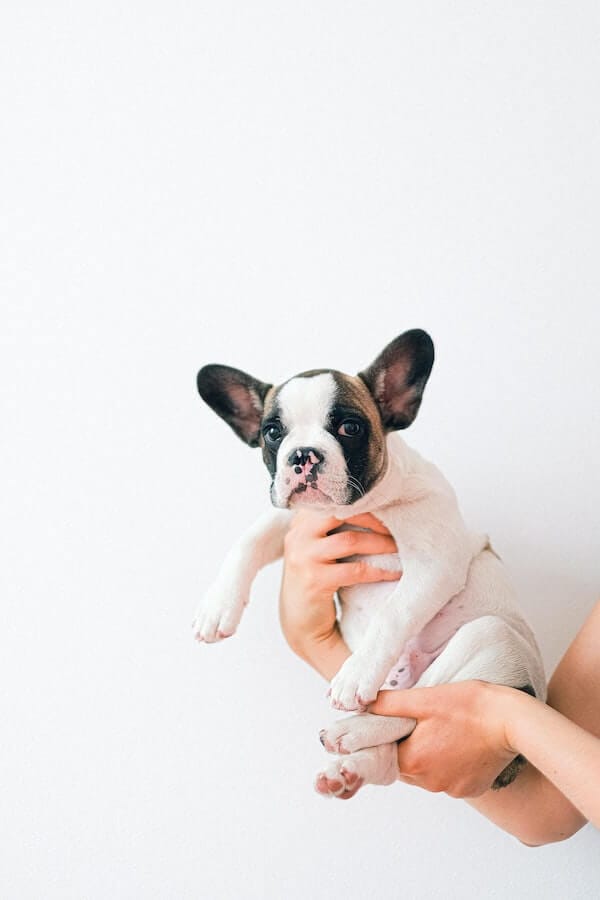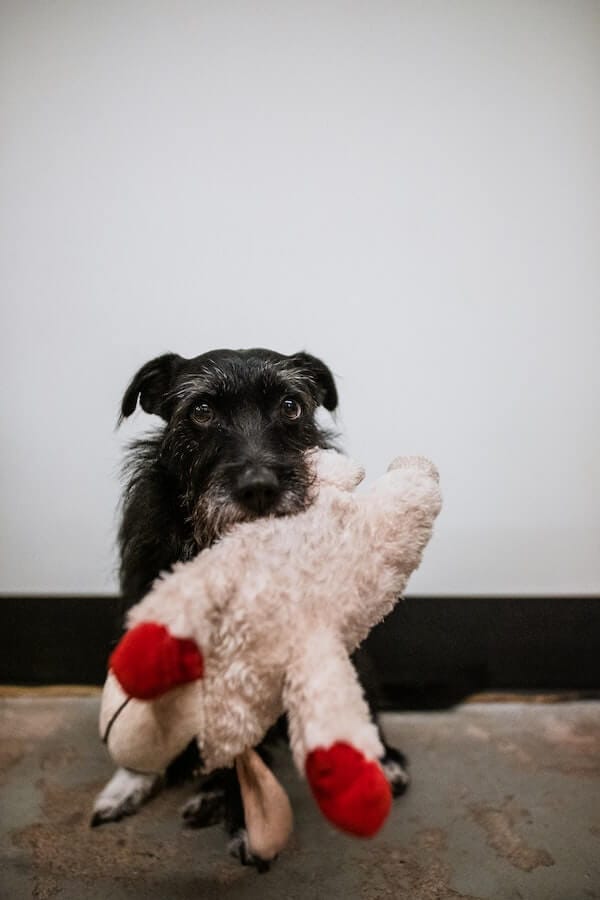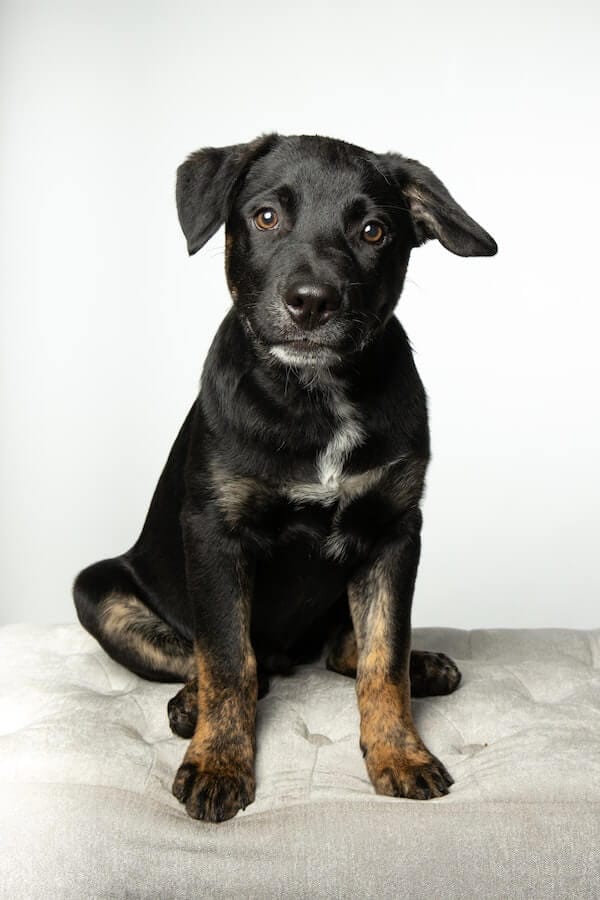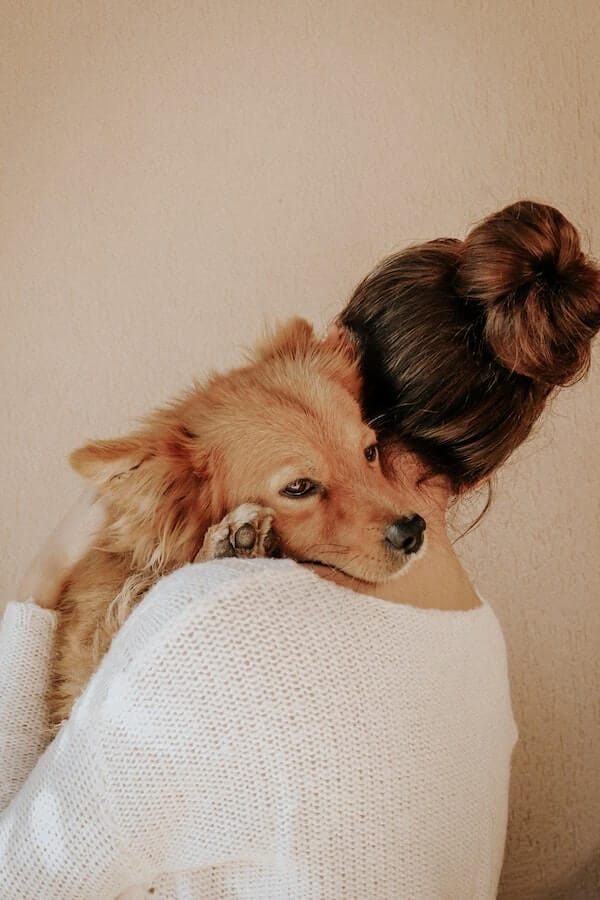
Has your beloved canine companion developed a fear of people, and now can’t bear to be around them? In this situation, you must be asking yourself how to get a dog to stop being afraid of people.
Don’t worry – help is at hand! In this article, we’ll go through some simple steps that you can take to get your pup back to their friendly, fearless self in no time.
We’ll look at why fear might have taken hold in the first place, as well as what you can do to calm it down.
Read on for all the tips and tricks!
Why is my dog terrified of people?

Are you wondering why your pup is scared of every person they come across?
It could be for a variety of reasons, and if this fear of people has become an issue, it’s time to get to the bottom of it.
Here are three possible explanations as to why your dog might be terrified of people:
1. Traumatic experience
Dogs can form negative associations with people just like we can.
Has your pup ever been in a situation where something scary happened around someone or they were mistreated by a human? This would explain their wariness around strangers.
You can ask this question at the adoption shelter if you
2. Lack of socialization
If puppies aren’t exposed to different types of people from a young age, they may never learn how to interact with them properly.
Socializing your pup is essential to ensure they don’t develop this kind of behavior.
3. Genetic predisposition
Some breeds are naturally more skittish and alert than others. So it’s possible that this fearfulness is simply in their DNA.
It’s important to recognize the signs of anxiety in these kinds of dogs and work with them regularly to help build their confidence around people.
If your pooch has developed a fear of people, there are several signs that dogs show when they are around a group of people.
How do dogs show that they are uncomfortable around people?

Dogs are pretty perceptive when it comes to sensing tension and recognizing when someone is making them uncomfortable.
If a canine companion starts displaying any of the following signals, it’s time for you to take a step back and give your furry friend some space:
1. Tail Tucking:
Dogs tuck their tails between their legs as an attempt to make themselves look smaller and less visible – a sign that they don’t feel safe in their current situation.
2. Eyes Glancing Away:
When dogs make eye contact with something (or someone) that unnerves them, they’ll often quickly break away from looking directly at the source of discomfort.
That’s why it’s usually best to briefly make eye contact with your pup before doing anything – if they hold your gaze, it’s a sign that they feel secure and at ease.
3. Panting or Drooling:
When dogs start to get overwhelmed by their environment, you may notice them panting or drooling more than usual.
This is one of the first signs of acute stress and needs to be addressed quickly in order to help them feel better.
4. Freezing Up:
It’s not uncommon for dogs to become completely still when something unsettles them.
This means that they don’t want to move any closer towards the source of discomfort, but also don’t want to attract attention by running away.
Freezing up is a very simple yet effective way for canines to express their discomfort.
5. Hackles Raised
When dogs raise the fur on their backs, it’s a sign that they’re feeling threatened and want to make themselves appear larger in order to ward off potential danger.
If a pup has its hackles raised around you, it’s usually best to give them some space until they calm down.
These are just a few of the signs your pup might use to show their unhappiness or discomfort with someone or something.
As long as you take the time to observe and interpret their body language accurately, you’ll be able to tell when it’s time for you (or someone else) to step back and let your four-legged friend relax.
At the end of the day, your pup’s well-being should be one of your top priorities – so make sure to keep an eye out for any signs that they’re feeling uncomfortable!
That brings us to the next question:
How to get a dog to stop being afraid of people

If you have a dog who is scared of people, don’t worry. There are plenty of ways to help them become more comfortable and confident around strangers.
Here are five tips for helping your pup get over their fear:
1. Start with exposure:
Introducing your dog to new people gradually can help them start feeling more comfortable in social settings, especially if you bring home a new puppy from the shelter.
Let it be the pup’s choice when they meet someone; if they want to back away or hide, that’s perfectly fine. Just try not to force any interactions.
2. Get rewards ready:
Have plenty of treats on hand so that your pup can associate positive feelings with meeting new people.
A few well-timed treats will help reinforce good behavior and give them the confidence to keep exploring.
3. Take it slow:
It’s important to let your dog take their time when meeting new people. If they seem nervous or scared, don’t push them to make contact.
Allow them to approach a person on their own terms and reward them with treats once they have made friendly contact.
4. Keep it positive:
It’s essential that you remain calm and patient throughout the entire process of introducing your pup to new people. No shouting or scolding if things don’t go as expected!
The more relaxed you are around strangers, the less anxious your pup will be too.
5. Ask for help:
Finally, if you need extra assistance with socializing your pup, don’t hesitate to ask for help.
A reputable trainer or behaviorist can provide you with additional tips and guidance on how to get your dog used to being around new people.
Final Thoughts

Now that you know the ways of how to get a dog to stop being afraid of people start slowly.
Start by allowing the dog to get used to people at a distance, then slowly introduce them closer over time.
With positive reinforcement and consistent care, you can help your pup become more comfortable around strangers in no time!
Even if they never quite become party animal, regular exposure will surely help give your furry friend some new confidence. So don’t be scared – with enough effort, you can turn even the timidest pups into proud pooches!
- 7 Dog Breeds With Webbed Feet And Why Do They Have Them - July 19, 2023
- 10 Best Fish For Small Tanks That Make Perfect Pets - July 18, 2023
- How to Breed Guinea Pigs: A Detailed Guide - July 17, 2023


GIPHY App Key not set. Please check settings